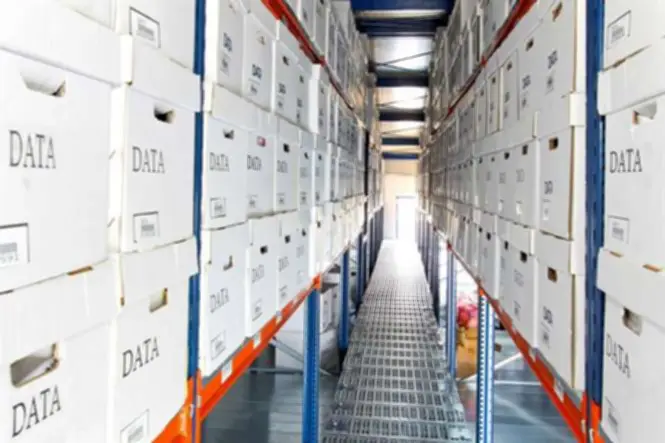Your cart is currently empty!
Blockchain For Digital Identification And Credentials
By decentralizing identity control and using robust cryptographic methods, blockchain identification management enhances both safety and privateness. It minimizes the danger of data breaches and offers a safer platform for storing and sharing personal information. Approximately 1.1 billion folks all over the world don’t have any proof of identification, and 45% of these without an id are among the many poorest 20% on the planet. Cumbersome identification paperwork processes, expenses, lack of access, and the easy lack of knowledge round private identity are primary roadblocks that keep over a billion individuals outdoors of conventional identification systems. Without possessing bodily identities, one can not enroll in school, apply for jobs, get a passport, or entry many governmental companies. Conversely, 60% of the 2.7 billion unbanked people already own cellphones, which paves the best way for blockchain-based cellular identification options which higher swimsuit the wants of susceptible blockchain identity management citizens.

Frequent Vulnerabilities In Ecdsa Implementations
The UN acknowledged this pressing want in Sustainable Development Goal (SDG) 16.9, which enshrines a proper to authorized identification for all, including start certificates. However, this requires an entire overhaul of the greatest way identities are managed on a nationwide and international scale and can take years if not a long time to alter. Nevertheless, according to an estimation by the World Economic Forum revealed in late 2018, there shall be one hundred fifty million people with blockchain based mostly identities by 2022 (World Economic Forum, 2018a, p. 19). Decentralization is a defining attribute of digital identities in blockchain networks, allowing people to handle their personal info and train larger management over it. These digital identities have numerous applications, including entry control, digital signature, voting, and identification verification, which help enhance the safety and reliability of the blockchain network by mitigating fraud risks.
- Different blockchain networks should be in a position to talk and work together with each other, ensuring seamless exchange and recognition of identities.
- The possibilities for DLT-based id solutions in the non-public sector are frequently intertwined with these within the public sector as some require verified credentials by governmental establishments.
- Furthermore, the change in somebody’s id can even result in adjustments for the identification of another particular person (e.g., with the demise of a spouse the other turns into a widower).
- While ECDSA is mathematically secure, vulnerabilities can emerge from weak nonce technology, improper blinding, or susceptibility to side-channel attacks similar to energy analysis or electromagnetic leakage.
- This characteristic acts as a powerful deterrent towards fraud, as any attempt to tamper with records is immediately detectable.
- It uses encryption to lessen the likelihood that an attacker can get access with out authorization and steal or revenue from user information.
The Mechanics Behind Blockchain Identity Verification
Identity administration using blockchain expertise can probably be useful for immigration. Carrying a common blockchain identification could be facilitated by a single blockchain-based answer. In ECDSA (Elliptic Curve Digital Signature Algorithm), the safety of the signature course of depends closely on the unpredictability and randomness of the nonce used through the generation of every signature.
Danger Of Information Breaches With Centralized And Federated Id Management Systems
It can be right to contemplate identification administration as a subset of the ’Identity and Access Management (IAM) process. A blockchain-based identity might be used to access a building, log in to a computer system, or authorize a transaction. Furthermore, many people are wary of recent applied sciences, especially those that contain delicate data such as personal identities.

The administration of their techniques is advantageous to users and programmers in all places. However, conventional identification management methods have lengthy relied on centralized intermediaries who issue, hold, and management your identifiers and . This means you can not control your identity-related info or determine who has access to personally identifiable data (PII) and the way a lot access these events have. Self-sovereign id is an idea where individuals have possession and management over their knowledge without counting on a centralized database or authorities to confirm identities. The ideas of self-sovereign identity emphasize person management, transparency, interoperability, and consent. Blockchain’s inherent attributes align well with these principles, making it a perfect know-how for realizing self-sovereign digital identification.
Certified Eid Derivation Into A Distributed Ledger Based Mostly Idm System
It makes use of blockchain know-how to make sure the validity of the non-public info, while permitting full management and portability. During a quick period in November 2017 the system could not be used as a result of a safety problem ensuing from a design vulnerability of the chip on the card. Although the identification is usually deemed “self-sovereign”, since the circulate of data is absolutely managed by the identification proprietor, there are restrictions when it comes to utilization. Hence, it could be argued that this system doesn’t characterize a pure embodiment of the self-sovereign identification concept and should not be thought-about as such. E-residence is oriented toward foreigners which want to use Estonia as a enterprise hub.
Take self-paced courses to master the fundamentals of finance and join with like-minded individuals. Someone on our staff will connect you with a monetary professional in our network holding the proper designation and experience. Ask a query about your monetary state of affairs providing as a lot element as attainable. Our mission is to empower readers with essentially the most factual and reliable monetary data possible to help them make informed selections for their individual needs. Finance Strategists is a number one monetary schooling group that connects folks with financial professionals, priding itself on offering correct and dependable financial info to tens of millions of readers annually. Our staff of reviewers are established professionals with many years of experience in areas of personal finance and maintain many superior levels and certifications.
From defining goals and choosing the right blockchain platform to designing and deploying a safe id administration system, we will discover every facet of this transformative expertise. Identity administration solutions constructed on blockchain technology could make it easier to confirm work historical past. Blockchain identification solutions can help in verifying the accuracy of the data on job resumes with the consent of the consumer. Needless to say, blockchain has the flexibility to handle vital issues that have an effect on identity administration as it exists now. Thus, in order to understand the practical implications of blockchain for identification management, let’s take a look at the following use cases for blockchain identity management. The primary obstacles that prevent over a billion people from using traditional identification methods embrace time-consuming documentation procedures, costs, restricted access, and a general lack of knowledge about one’s own id.
At Finance Strategists, we associate with monetary specialists to ensure the accuracy of our monetary content material. Users need to feel snug with the expertise, and they need to understand the benefits it brings, such as enhanced privateness and safety. For instance, the challenge presents itself within the type of executing the ‘Right to be Forgotten,’ as mandated by the General Data Protection Regulation (GDPR), on an immutable blockchain construction.
The public key identifies the account’s controller, while the personal keys can sign and decrypt messages for this account. Public key cryptography provides proofs wanted to authenticate entities and forestall impersonation and use of faux identities, utilizing cryptographic signatures(opens in a model new tab) to confirm all claims. To solve these issues, we now have decentralized identification techniques constructed on public blockchains like Ethereum. Decentralized identity allows people to handle their identity-related information.
• Centralized id methods, where a single group establishes and manages id. Examples include a government electoral roll, or a land registry system, but additionally the connection with private actors corresponding to a bank. We acknowledge that major strides towards digital identity are presently being undertaken by the DLT community. Furthermore, it is not our goal to duplicate and review the numerous number of purely technology-related blogs and white papers written on the topic. Rather, we aim to contribute to the idea of digital id from a philosophical and authorized perspective.